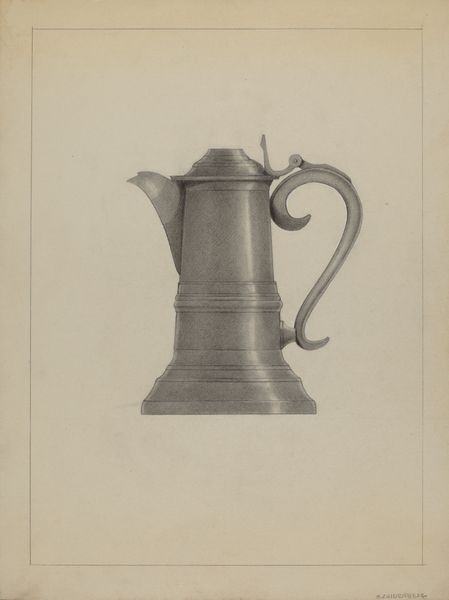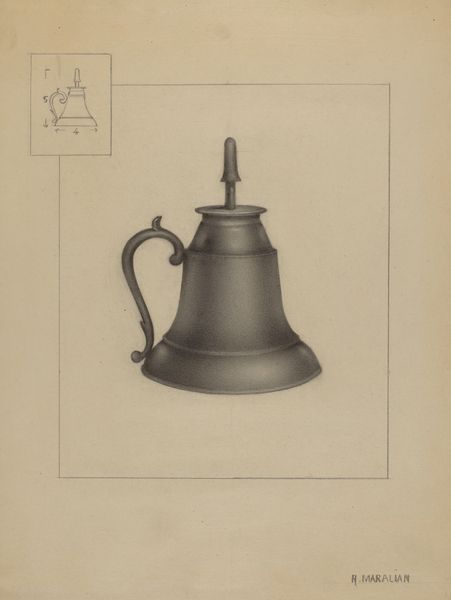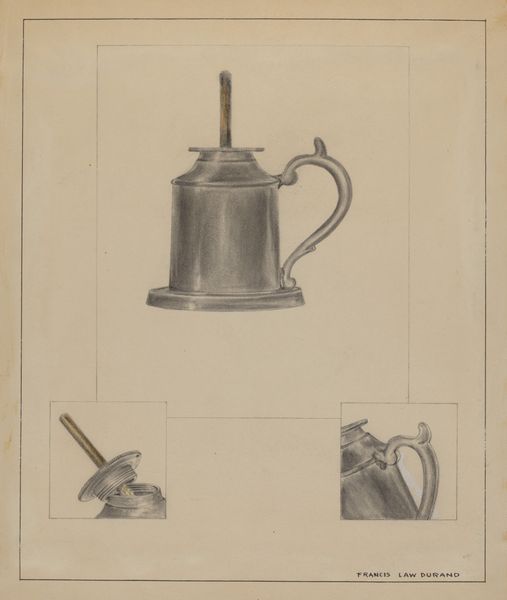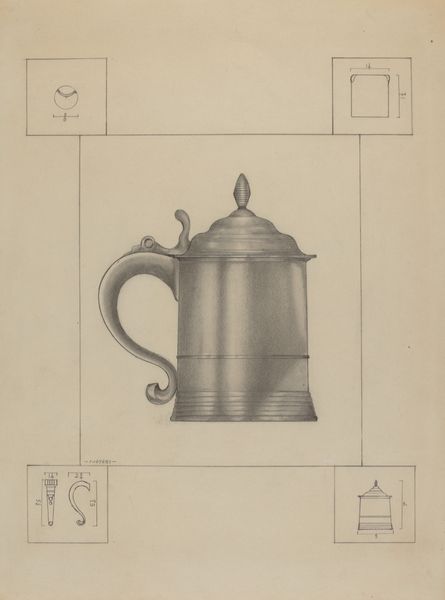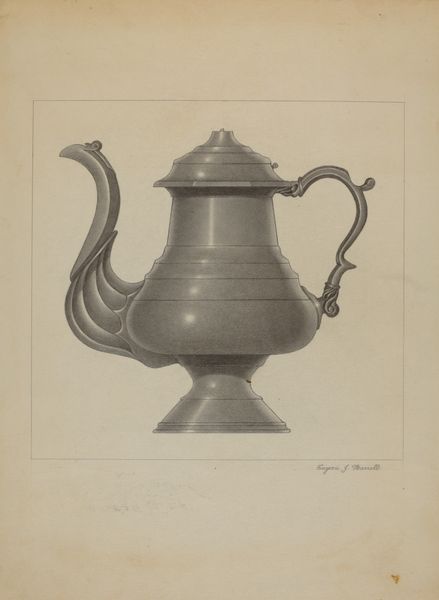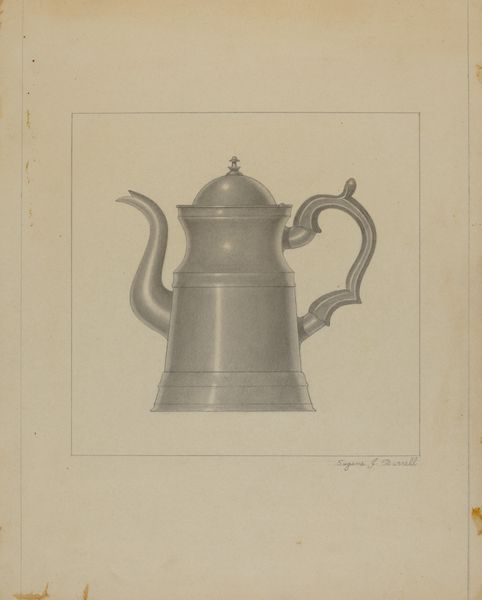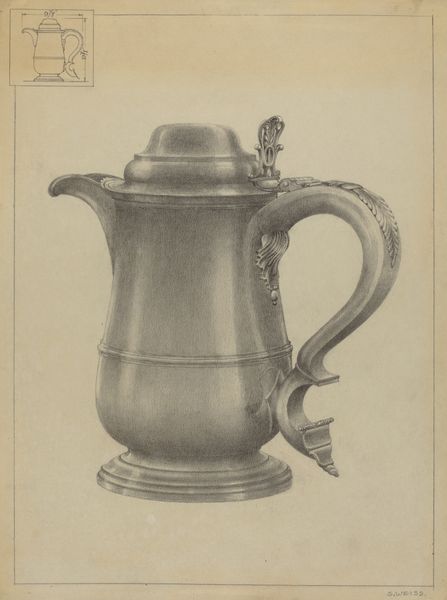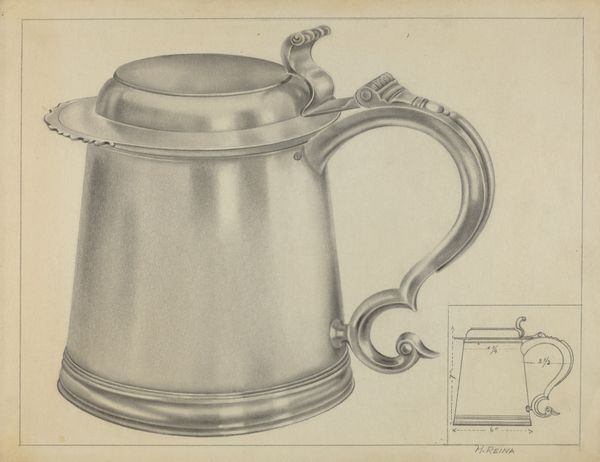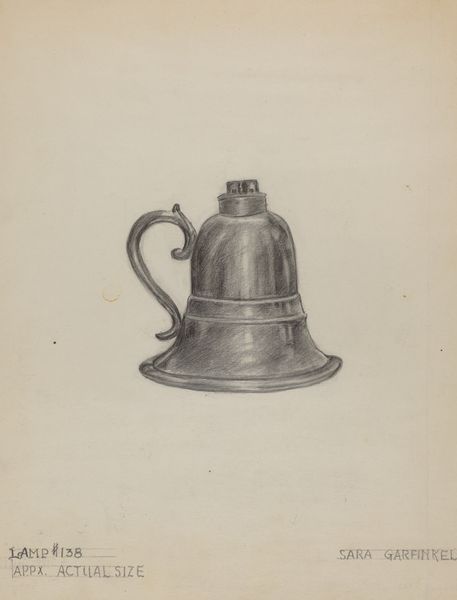
drawing, pencil
#
drawing
#
pencil drawing
#
pencil
Dimensions: overall: 28.7 x 23 cm (11 5/16 x 9 1/16 in.) Original IAD Object: 11" high; 6 1/2" in diameter
Copyright: National Gallery of Art: CC0 1.0
Editor: This is Herman Bader’s "Pewter Flagon," a pencil drawing from around 1936. I find it very…grounded. The detail is incredible, and it feels like I could reach out and touch the cool metal. What do you see in it? Curator: Bader gives us more than just a depiction of an object. It is a record, an archive. Note how he includes schematic drawings, dimensional notations... He isn't merely rendering; he's documenting. The flagon itself becomes a symbol, pregnant with the everyday rituals surrounding it – brewing, serving, sharing. Editor: So, the flagon represents a specific time and place, and certain routines of daily life. Curator: Precisely. Consider how domestic objects often function as cultural anchors. What narratives might a simple flagon hold within a family, a community? The rituals associated with it create continuity, forging a tangible link between generations. Editor: Like family heirlooms connecting us to our ancestors...I didn't initially think of it that way! It seemed so...ordinary. Curator: And that is its strength. It testifies to the power of the mundane. We imbue ordinary objects with emotional significance; they tell stories. Even the metallic tone carries meaning, representing perhaps strength, resilience and the ability to contain, both liquid and memories. What sort of memories would you suppose that specific vessel was part of, given the era? Editor: Knowing it's from the 30's makes me think about simple joys, sharing what you have. Seeing it only as a flagon would be missing so much of its significance. Thanks, that perspective really shifts how I understand it.
Comments
No comments
Be the first to comment and join the conversation on the ultimate creative platform.

